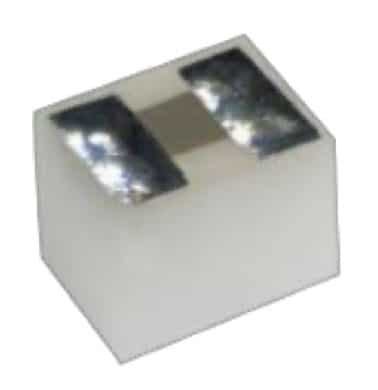This paper on 70GHz high frequency behavior of chip thin film resistors following AEC-Q200 qualification tests was presented by Benjamin Nicolle and Alexandre Moulin, VISHAY Sfernice SA, France during the 5th Space Passive Component Days (SPCD), an International Symposium held from October 15th to 18th, 2024, at ESA/ESTEC in Noordwijk, the Netherlands. Published under permission from ESA SPCD organizers.
Introduction
The evolution of wireless technologies heavily relies on high-frequency circuits, which are crucial for faster data transmission across sectors such as military, aerospace, automotive, and mobile 5G.
Passive components, including resistors, must adapt to these high-frequency demands. This paper, presented at the 5th Space Passive Component Days (SPCD), focuses on measuring S-parameters and deducing impedance values of Vishay’s CHA series thin film chip resistors at frequencies up to 70 GHz.
The goal is to demonstrate the high stability and reliability of these SMD chip resistors, especially under stringent AEC-Q200 tests designed to simulate extreme environmental conditions.
Key Points
- The CHA series thin film chip resistors are optimized for mmWave, 5G, radar, and high-frequency applications, with impedance stability up to 70 GHz.
- High-frequency characterization involves precise measurement techniques using S-parameters and impedance modeling.
- PCB design plays a critical role in minimizing parasitic effects and enhancing resistor performance.
- Mounting techniques are essential to ensure mechanical stability, especially for very small resistor packages.
- AEC-Q200 compliant tests confirm the durability and performance consistency of the CHA series under harsh conditions.
Extended Summary
The CHA series resistors, manufactured by Vishay SA, are engineered for high-frequency applications, offering minimal internal reactance and operating effectively up to 70 GHz.
These resistors are available with gold and tin/silver terminations and cover a resistance range of 10 Ω to 500 Ω.
Understanding the behavior of resistors at such frequencies requires analyzing parasitic elements like inductance and capacitance, which are inherent due to construction and mounting.
The paper discusses the use of S-parameters and impedance characterization to simulate high-frequency performance accurately. The resistor, when mounted on a PCB, is modeled using a π-structure to account for parasitic effects. This structure aids in deriving impedance values from transmission admittance conversion after precise calibration.
Where:
R is the nominal resistance value
L is the inductance linked to the resistor
C is the capacitance linked to the resistor
Lc is the parasitic inductance due to the resistor mounting
Cg is the parasitic capacitance due to the resistor mounting
Zo is the characteristic impedance of the line
High-frequency PCB design is another cornerstone of this study. The authors detail the selection of high-quality, low-loss substrates with stable dielectric properties suitable for frequencies above 40 GHz. Using a conductive-backed coplanar waveguide (CPWG) topology, the design minimizes discontinuities and optimizes impedance matching, crucial for maintaining performance up to 70 GHz. The use of TRL (thru-reflect-line) calibration techniques ensures measurement accuracy by negating the effects of cables, connectors, and other external influences.
Given the miniature size of the CHA 02016 package, assembly precision is critical to prevent issues like excessive tilting. Recommendations include specific stencil thicknesses, solder paste types, and thermal profiles to achieve optimal mounting.
The resistors underwent comprehensive AEC-Q200 tests, including high-temperature exposure, temperature cycling, biased humidity, operational life, mechanical shock, and vibration tests. The results showed exceptional stability, with minimal changes in impedance values before and after the tests. Frequency response measurements confirmed that the CHA series resistors maintained performance consistency even under extreme stress conditions, aligning closely with datasheet specifications.
Conclusion
The study demonstrates that Vishay’s CHA series thin film chip resistors offer outstanding high-frequency performance up to 70 GHz. Their robustness against environmental stresses, verified through rigorous AEC-Q200 tests, makes them reliable components for demanding applications in aerospace, military, automotive, and next-generation wireless technologies. The combination of precise measurement techniques, optimized PCB design, and meticulous assembly processes ensures these resistors deliver consistent, high-quality performance in real-world conditions.
Read the full paper:
